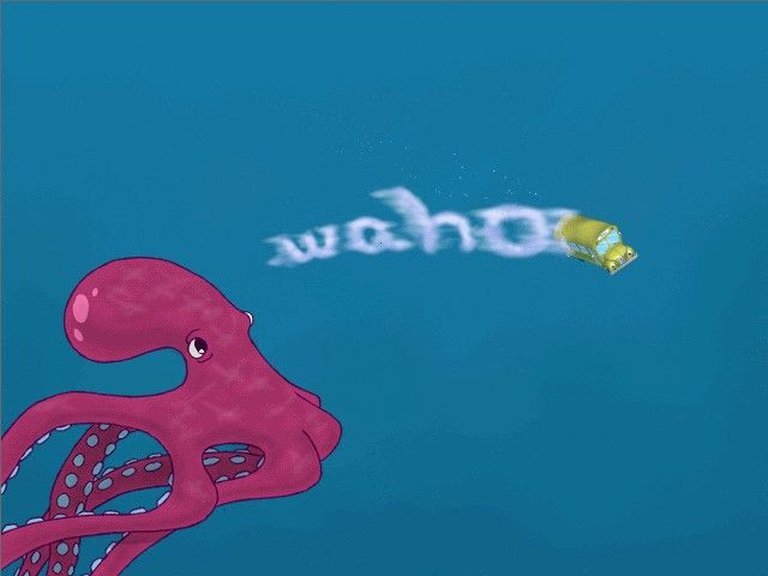- Release Year: 2001
- Platforms: Macintosh, Windows
- Publisher: Microsoft Corporation
- Developer: KnowWonder, Inc.
- Genre: Educational, Science
- Game Mode: Single-player
- Gameplay: Arcade-style games, Art activities, Science experiments
- Setting: Pacific Ocean
- Average Score: 91/100

Description
Join Ms. Frizzle and her class on an educational field trip to the Pacific Ocean in Scholastic’s The Magic School Bus Whales and Dolphins: Activity Center, designed for children ages 6 to 10. Through interactive activities like art projects, arcade-style games, and science experiments, players learn fascinating facts about whales and dolphins, including their habitats, diets, and behaviors, blending fun learning with engaging gameplay inspired by the beloved Magic School Bus TV series.
Scholastic’s The Magic School Bus Whales and Dolphins: Activity Center: Review
Introduction
In the vast ocean of educational games, few titles have captivated the imaginations of young learners as effectively as Scholastic’s The Magic School Bus Whales and Dolphins: Activity Center. Released in 2001, this enchanting title builds upon the legacy of the beloved Magic School Bus franchise, combining whimsical storytelling with hands-on scientific discovery. Targeting children aged 6-10, this game charts a course through the Pacific Ocean, offering an up-close-and-personal encounter with whales and dolphins while teaching essential marine biology concepts.
Development History & Context
The development of The Magic School Bus Whales and Dolphins Activity Center took place in the early 21st century, a period marked by significant advancements in educational software. The collaboration between Scholastic, Microsoft Corporation, and KnowWonder Inc. brought together cutting-edge technology and the trusted educational expertise of the Magic School Bus brand. With 24 credited personnel, including Executive Producers Daniel Elenbaas and David Mann, the team faced the challenge of translating the TV show’s dynamic learning experiences into an interactive digital format. Technological constraints of the era included CD-ROM storage limitations and the early stages of 3D graphics, yet the developers skillfully crafted a game that intertwined audiovisual storytelling with engaging activities.
Narrative & Thematic Deep Dive
The plot of The Magic School Bus Whales and Dolphins Activity Center revolves around Ms. Frizzle and her students embarking on a field trip to explore the Pacific Ocean. Through a series of activities hosted by familiar characters like Arnold, Phoebe, and Ralphie, children are guided throughanutshell需 evid scientific lessons. Key themes include marine biodiversity, the adaptations of cetaceans, and the importance of conservation.
Dialogues are presented with closed captions, making the game accessible to a wider audience. The script by Joyce Yarrow skillfully weaves factual information into engaging conversations, ensuring that learning remains fun and relatable. For example, quizzes about whether whales have gills or lungs, or discovering what a blue whale eats (krill, not seagulls), seamlessly integrate educational content into interactive experiences.
Gameplay Mechanics & Systems
At the heart of The Magic School Bus Whales and Dolphins Activity Center is an array of diverse activities designed to cater to different learning styles and interests. The main hub is the bus itself, where players can choose from various options like Make a Scene (stickers to create underwater scenes), Jigsaw Puzzles, Matching Game, and more. Each activity is designed to offer both enjoyment and educational value.
Core gameplay loops involve solving puzzles, performing scientific experiments, and creating artwork. The Matching Game, for instance, requires players to match whales and dolphins based on their physical characteristics or behaviors. The Jigsaw Puzzle activity not only sharpens spatial reasoning but also introduces facts about the featured creatures. Activities like “Make a Scene” allow creative expression while teaching about ecosystems.
The user interface is intuitive, with clear icons and voice prompts from the characters. Progress is tracked, and completion of activities often unlock rewards or new content, which keeps children motivated to explore further.
World-Building, Art & Sound
The game’s setting is a vibrant, animated underwater world that captures the imagination. The art direction combines brightly colored 2D sprites with detailed background environments, creating an inviting atmosphere. The whale and dolphin illustrations are both scientifically accurate and charming, making them appealing to young learners.
Sound design plays a crucial role in immersion, with ambient noises of the ocean, whale songs, and dolphin clicks subtly enhancing the environment. The game’s soundtrack features cheerful, upbeat themes that reflect the playful learning atmosphere, while voice acting from the TV show’s cast adds authenticity.
Reception & Legacy
Upon its release, The Magic School Bus Whales and Dolphins Activity Center received positive critical reception with an average score of 88% from critics. Reviews highlighted its engaging activities, educational content, and effective balance between learning and entertainment. The game’s popularity among testers was also noted, with Review Corner awarding it 85% and Tech with Kids giving it a 90% rating.
In terms of legacy, this game stands as a shining example of how educational software can successfully blend entertainment with scientific learning. It influenced subsequent entries in the Magic School Bus series and set a standard for future activity center-style educational games.
Conclusion
Scholastic’s The Magic School Bus Whales and Dolphins: Activity Center remains a timeless classic in the realm of educational gaming. Its seamless integration of interactive activities, engaging narrative, and rich scientific content has left an indelible mark on young learners. By offering an immersive experience that balances fun and education, this game not only teaches valuable lessons about marine life but also instills a lifelong curiosity about the natural world.